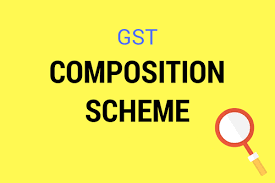 The composition scheme for small taxpayers that offers easier compliance and a flat rate of tax looks set to be made more attractive as its ambit may be expanded to include inter-state supplies of goods.
The composition scheme for small taxpayers that offers easier compliance and a flat rate of tax looks set to be made more attractive as its ambit may be expanded to include inter-state supplies of goods.
Besides, the facility of input tax credit may be made available under this scheme.
A ministerial panel, led by Assam Finance Minister Himanta Biswa Sarma, is expected to finalise the contours of the revised structure in its next meeting on Sunday.
The five-member group of ministers (GoM) would meet representatives of small- and medium-scale industry on Sunday to seek feedback on improving the composition scheme.
It would be the second meeting of the GoM, which decided to reduce rates for restaurants to 12 per cent from 18 per cent while withdrawing the input tax credit facility.
The GoM’s decision would be put up to the GST Council at its next meeting in Guwahati on November 10 for approval.
“There was broad consensus in the meeting that the compliance burden needs to be reduced for small and medium enterprises in the GST.
Taking the discussion forward, we will deliberate on extending the composition scheme to those undertaking inter-state supply of goods. This is a key demand from the sector,” said a state minister who is part of the panel.
He added the input tax credit facility may also be made available under the composition scheme in order to make it easier for smaller players to opt for it.
“Many small and medium players are hesitant about opting for the composition scheme as they worry that large players will stop buying from them. This needs rectification,” he said.
“If input tax credit is to be given, the contours of the scheme will need to change wherein composition dealers will have to show tax on invoice and file regular GST returns, unless some kind of a deemed credit mechanism is worked out,” said Pratik Jain of PwC India.
The ministry of small and medium enterprises has been asked to discuss with industry representatives what they expect from the composition scheme and what more can be done to make it more attractive.
The other members of the GoM are Bihar Deputy Chief Minister Sushil Modi, Jammu and Kashmir Finance Minister Haseeb Drabu, Punjab Finance Minister Manpreet Singh Badal and Chhattisgarh Minister of Commercial Taxes Amar Agrawal.
The ministerial panel would look into whether the turnover of exempted goods can be excluded from the total turnover threshold for levying tax in the composition scheme.
The final decision would be taken in the upcoming meeting ahead of the GST Council meeting.
The council, chaired by Union Finance Minister Arun Jaitley, raised the eligibility threshold for the composition scheme to an annual turnover of Rs 1 crore from the current Rs 75 lakh at its last meeting.
The scheme offers a flat rate of tax and quarterly filing of tax returns. The window, that ended on October 1, has been extended till March 31. The scheme already received extensions twice earlier.
In the scheme, a trader pays the GST at one per cent, a manufacturer at two per cent and a restaurant owner at five per cent, but they are not allowed input tax credit.
So far, 1.5 million registered entities have opted for the composition scheme, which amounts to a sixth of 8.9 million GST assesses.
Anyone availing of the scheme cannot claim input tax credit. Such a dealer cannot issue a tax invoice.
Hence, someone buying from a composition scheme dealer cannot claim input tax on the goods bought.
Besides, one cannot undertake inter-state supplies in order to opt for the scheme.
A composition scheme dealer needs to furnish one return, i.e. GSTR-4, on a quarterly basis, and an annual return, Form GSTR-9A, as against three forms every month by a normal taxpayer.
Besides, there is no requirement of invoice-wise details or HSN (harmonised system of nomenclature) codes in their returns.
The scheme is not available to manufacturers of tobacco and tobacco substitutes, pan masala and ice cream.
Revenue secretary Hasmukh Adhia had said in an interview to PTI that the government was considering easing the compliance burden on small and medium enterprises.
“There is a need for harmonisation of items chapter-wise and wherever we find there is a big burden on small and medium businesses and on the common man, if we bring it down, there will be better compliance,” the report cited Adhia as saying.
At the previous GST Council meeting, small taxpayers with up to Rs 150,000 turnover were extended the option of quarterly tax payment and filing of returns.
Around 94-95 per cent of tax revenue comes from big taxpayers.
Source: Rediff.com
We have launched Single Platform on GST Compliances In India, assisting in 4 areas – 1) Migration, 2) GST Compliance, 3) Training and 4) Transition & Implementation. Click this link for any assistance

 Toll Free:
Toll Free:  Contact Us
Contact Us

